The Broker: How Kunal Bhasin and His Team of Closers Make Deals in NYC
September 25, 2018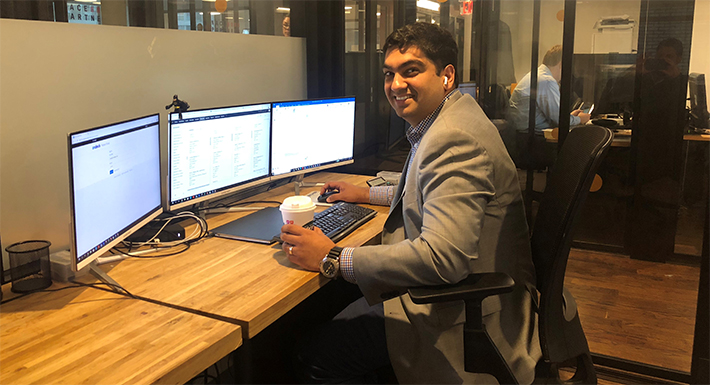 Kunal Bhasin, President, 1 West Finance
Kunal Bhasin, President, 1 West FinanceHis title:
President and owner of 1 West Finance in New York City. He founded it in May of 2017 in New York City. The company is a team of seven.
His background:
I was at World Business Lenders for 6 years. That’s where I learned this business and figured out how things worked. Then I left WBL and started 1 West Finance. At WBL, I worked in business development…And I think I was in a good space there to get experience to start my own shop.
His morning:
I get up around 7:00, usually will take my kids to school. I’ll have one cup of coffee, then pick up a cup of coffee for my train ride. On the train, I answer any overnight emails and follow up on whatever outstanding deals I’m working on. So usually I’ll be pinging funders to say “What’s going on with this? What’s going on with that? What’s next, what’s next, what’s next?” Then I buy another coffee when I get to Penn Station. I get to the office by 9:15 / 9:30.
Two times a week at a minimum, will bring in all the guys into the conference room. We will go through the pipeline…Who needs my help? Or who needs the sales manager’s help on a certain deal?…Things tend to move really well after that meeting.
 Biggest challenge:
Biggest challenge:
Because of the nature of our relationships, we get a lot of clients that haven’t done this type of financing before. And there’s always some level of sticker shock that the client experiences when you tell them, “I’m going to give you $100,000 and you’re going to pay me $130,000 or $135,000.” And they’re like “Oh my goodness. How is that possible?” “And by the way,” we say, “I’m going to take the payments daily or weekly.”
For clients who haven’t experienced this before, getting over this initial sticker shock is a challenge.
How do you respond to this shock?
I usually say “Hey, listen, we are not a bank.” I say “we fund clients everyday and clients fall into two buckets.” Either they have already gone to the banks and have been told “No.” Or, they can get the money from the bank but they just don’t have the time, because the bank is going to take 40 days or 60 days. And they need the money today or tomorrow.
So I say “If you think you have the 60 days and you can go to the bank, you should go to the bank. Don’t take this money. But if the bank says ‘No’ or you can’t wait, then I’m the next stop.”
Some of his favorite funders:
OnDeck – “by far, my favorite”
Green Peak Capital
InAdvance
Wall Funding
Average monthly volume funded:
$2.7 million.
Largest deal:
$1 million. We made $50,000. That was this year.
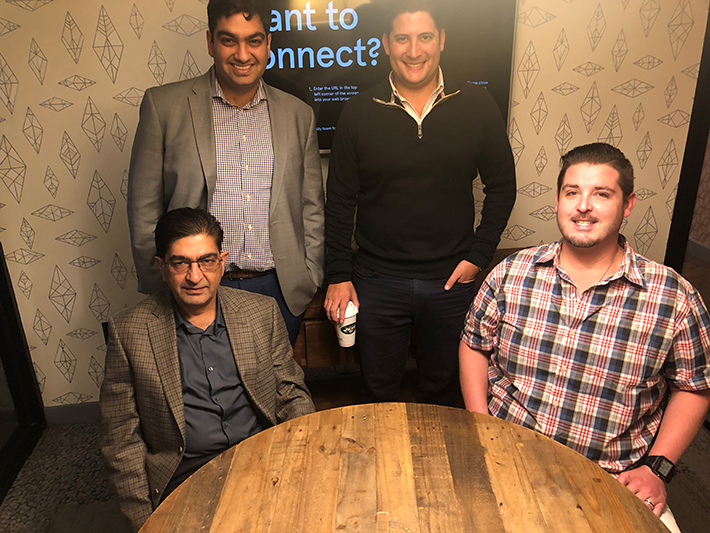 The Team
The TeamHis funding process:
A deal first goes to two processors [we have]. They make sure everything is there. No pages missing. They’ll make a decision – is this a good deal for OnDeck or is this a better deal for InAdvance or Fundworks? They’ll actually make the submission, update the CRM, and once the approvals come back, if it meets what the client needs, then the deal goes round robin around the sales team…We try to keep it very fair. And all my guys can close. They’ve all been in business for at least 5 years.
His weekends:
I’m a husband and the father of three and a half year-old identical twin boys. I work a lot and my kids are generally asleep before I get home. So weekends are dedicated to my wife and kids. I try to put the phone away and spend some quality time with them.
Will a Bank Fund Me in 24 Hours? (U.S. Bank Announces High-speed Digital-only Loan Process)
September 25, 2018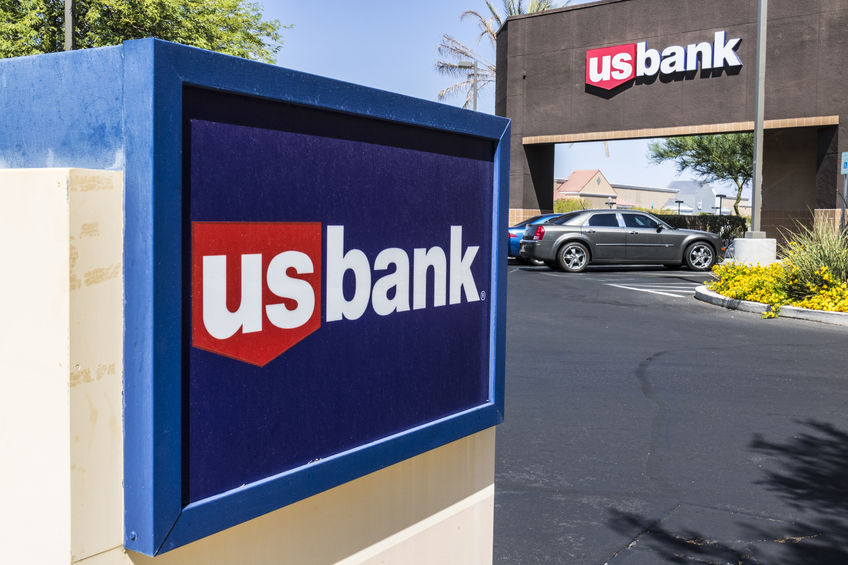 Yesterday, U.S. Bank announced that it has created a fully digital application process that allows a small business to borrow up to $250,000 in one day or less.
Yesterday, U.S. Bank announced that it has created a fully digital application process that allows a small business to borrow up to $250,000 in one day or less.
“We created this new digital experience to deliver on our commitment to continuously improve the way we serve our customers,” said Tim Welsh, U.S. Bank vice chairman of Consumer Banking Sales & Support. “This is the first of several exciting digital initiatives we’re pursuing that we believe will better serve the needs of small businesses and consumers.”
The new streamlined process allows single-owner business customers to access loan products that the bank already offers. The application can be completed on any device – mobile, tablet or computer – and if approved, it will allow the borrower to review their loan details and electronically sign their closing documents.
The Minneapolis-based bank operates in 25 states and, together with its parent company, U.S. Bancorp (NYSE: USB), has $461 billion in assets as of June 30, 2018.
The Broker: How Daniel Dias Evolved and Found Success
September 19, 2018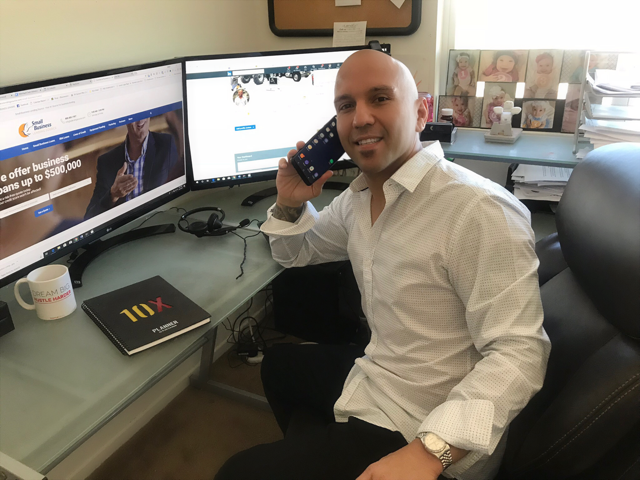 Title: CEO of Small Business Lending Source. A one-man shop with one full-time assistant and another assistant in San Diego, California.
Title: CEO of Small Business Lending Source. A one-man shop with one full-time assistant and another assistant in San Diego, California.
Years in the industry: 5
How he got into the industry:
I’ve always been an entrepreneur and I had a business that was going downhill. [In 2013,] I had a friend that was doing business loans and he told me that he had made $26,000 the month before, so I was like “What are you doing that’s bringing in so much money working for someone else?” And he said business loans. So I was like, “I need to check this out.” So I went and worked for the company he was working at for about 6 months. I learned how to sell the products and then went off and did my own thing. Now we do equipment leasing, business credit lines, SBA Express Loans and other products.
What were some of the challenges of starting your own business?
Initially, the biggest challenge was that I had only done merchant cash advance and not everyone is a good fit for merchant cash advance. So I had to learn about the other products, [which] is one thing that has helped me grow the business. Every year, I’ve seen about a 30 to 40% increase in revenue.
Also, marketing has changed a lot. I was kind of old school. I’d pick up the phone, start dialing, do direct mail. [But] since I’ve been in this business, I’ve learned a lot about internet marketing. I do a lot of marketing through Linkedin and Facebook, a lot of retargeting…I taught myself everything I needed to know about internet marketing.
His daily routine:
6/6:30 a.m. – I wake up. I make myself breakfast along with my daughter and get her ready for her daycare.
7:30 a.m. – I start work. I’m checking my emails, returning emails and calls.
9 a.m. – 12 p.m. – I’m doing outbound marketing. I dial through whatever leads came in.
1 p.m. – 3 p.m. – I try to close deals this time of the day.
3 p.m. – 5 p.m. – More marketing.
5 p.m. – 7 p.m. – I spend time with daughter.
7 p.m. – 9 p.m. – I go to the gym.
9:30 p.m. – Get back home.
10 p.m. – 12/1 a.m. – I’m working on marketing or trying to learn something new.
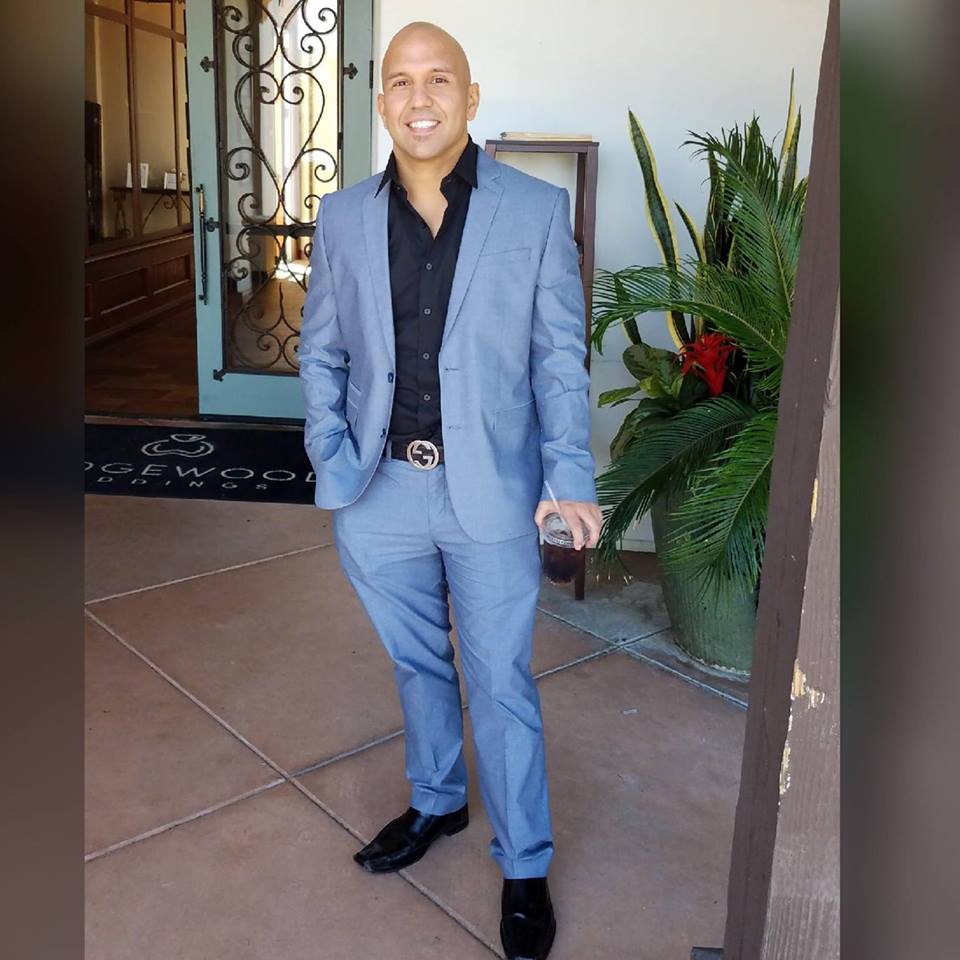 What he means by “marketing”:
What he means by “marketing”:
I do all my own posts, so I have to come up with the copywriting for LinkedIn for the next day. I have a certain strategy that I use, so I have to come up with the content for that everyday. And I’m regularly checking to to see how my strategy/posts are performing.
How his process works:
I give the client a call the first time a lead comes in. My assistant is more or less on the front end and she will follow up the 2nd, 3rd, 4th time. She’s collecting all the paperwork after that.
Then, once the offer comes in, I call the people back and then I’m closing the deals.
His monthly volume:
Last month we funded $750,000. I’m typically generating a good 300 leads a month. Of course, they’re not all qualified, but it’s a good amount.
His biggest deal:
It was an $850,000 deal and I got a $50,000 commission.
Tips for having a home office:
I have a specific area in my house where I work. It’s a loft upstairs and once I’m up there, I’m completely focused on the business. There’s no TV in there. If you’re going to work from home, you can’t have distractions. You have to be of the mindset that once I’m at my desk, there’s nothing else – no internet surfing. If you’re going to work from home, you have to have a designated space where everyone knows “If I’m in there and the door is closed, don’t bother me.”
His mindset:
Putting a plan in place and doing everything you have to do in order to get it done. There’s no procrastination. If I’m going to do something, it’s going to get done. If I don’t know how to do it, I’m going to find somebody that does or go on the internet and find the answer to my question.
Where he’ll be on Oct. 4th:
At deBanked CONNECT San Diego. He even got an Early Bird ticket!
How to Use Your Clothes to Get Deals
September 17, 2018 Most people are always trying to find more business and make more money. But most of us don’t think of our wardrobe as a way to accomplish this. That is, except for Chief Marketing Officer at Quicksilver Capital Paul Boxer, who looks in his closet and sees business opportunity. Boxer is known for going to industry events wearing a suit with a pattern of $100 bills piled on top of each other. Not one for understatement, he pairs it with a similar tie, enveloped in cash.
Most people are always trying to find more business and make more money. But most of us don’t think of our wardrobe as a way to accomplish this. That is, except for Chief Marketing Officer at Quicksilver Capital Paul Boxer, who looks in his closet and sees business opportunity. Boxer is known for going to industry events wearing a suit with a pattern of $100 bills piled on top of each other. Not one for understatement, he pairs it with a similar tie, enveloped in cash.
“I’ve become known as the ‘Money Suit Guy,’” Boxer told deBanked, “and with that, so many people have found me and reached out to work with me. They have all said, ‘if you can wear that and rock it out, I want to work with you.’”
In addition to Boxer’s iconic money suit, he also wears a Quicksilver Capital baseball hat to promote his company and he often wears Quicksilver glasses and cash patterned shoes, which he said he got as a gift from his CEO. Even before his money suit, Boxer wore loud and unusual glasses to start conversations. He says he has over 100 pairs of prescription glasses and he put prescription lenses into his company’s promotional swag glasses.
“I feel that with the attire and suits that I’m known for, people are more prone to come up to me and strike up a conversation. It’s just that – a great conversation starter…And I found that I’ve built many business relationships at events with just the clothing I wear,” Boxer said.
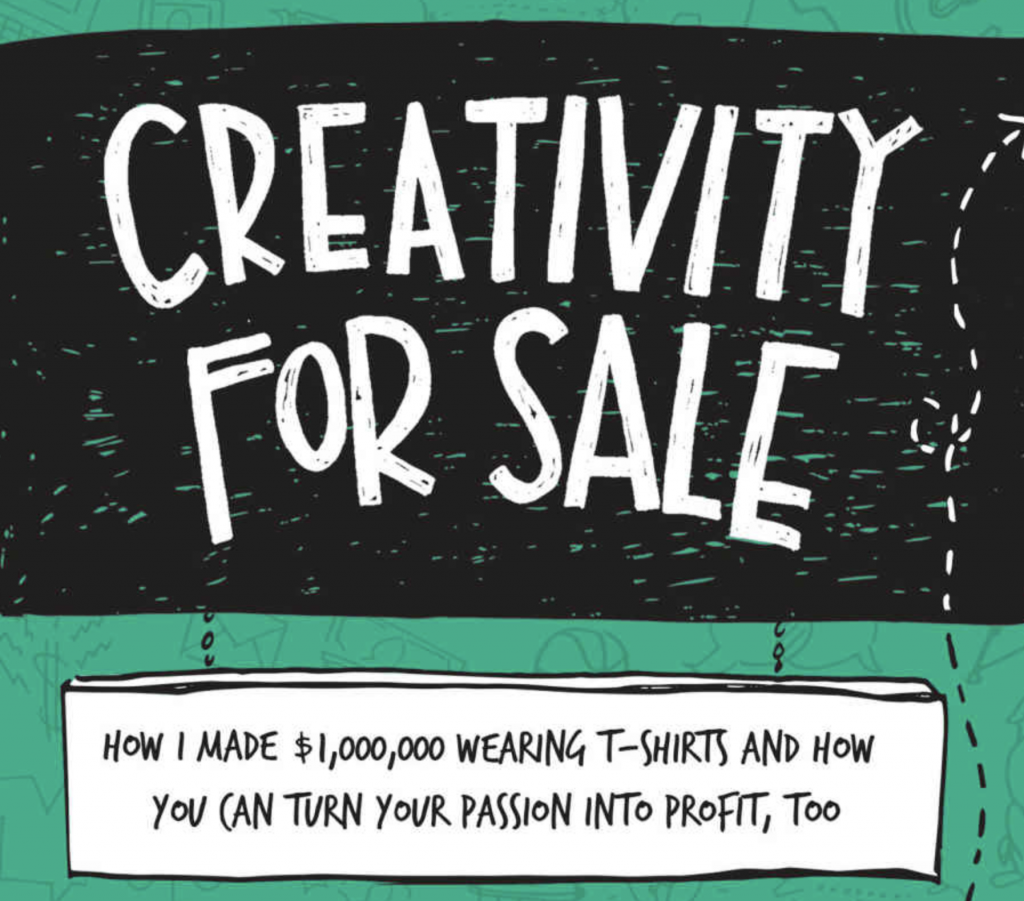 The concept of wearing promotional clothing – namely a t-shirt – to promote a company has been around for years. In fact, in 2009, a young man named Jason Sadler started a company called iwearyourshirt.com, in which he filmed himself wearing a different company’s shirt everyday. He generated over $1 million within a few years, even though he started out with a virtually non-existent social media presence. (He moved on to start something new in 2013).
The concept of wearing promotional clothing – namely a t-shirt – to promote a company has been around for years. In fact, in 2009, a young man named Jason Sadler started a company called iwearyourshirt.com, in which he filmed himself wearing a different company’s shirt everyday. He generated over $1 million within a few years, even though he started out with a virtually non-existent social media presence. (He moved on to start something new in 2013).
The legendary golfer Greg Norman is never seen without his iconic straw hat which he built an apparel brand around that now includes golf shirts, shorts and pants.
And nonprofits have used apparel for years to spread awareness. Think of pink for breast cancer, the red bow for AIDS and Lance Armstrong’s yellow wristband for cancer awareness. But there is definitely opportunity for for-profits to use clothing to turn strangers into paying clients. Or if you will, into money.
 deBanked’s San Diego event is also tapping into the creativity. The first 100 salespeople to check in on October 4th will receive a FREE t-shirt that says, “I Can Fund Your Business” and “Ask Me How” on the back. “There is no mention of deBanked anywhere on the shirt,” said deBanked president and event organizer Sean Murray. “We simply want to create opportunities for salespeople to do more business. They can wear it on Main Street, at the gym, or while patronizing small businesses. Someone is bound to ask them how to get funded.”
deBanked’s San Diego event is also tapping into the creativity. The first 100 salespeople to check in on October 4th will receive a FREE t-shirt that says, “I Can Fund Your Business” and “Ask Me How” on the back. “There is no mention of deBanked anywhere on the shirt,” said deBanked president and event organizer Sean Murray. “We simply want to create opportunities for salespeople to do more business. They can wear it on Main Street, at the gym, or while patronizing small businesses. Someone is bound to ask them how to get funded.”
“If we dress the way we want to be perceived, it will in turn be seen that way,” Boxer said. “Dress to impress, dress to rock it out and you will go in with that feeling that you can conquer everything…And you will! It will help you with your mindset which will lead you to close more deals and in effect generate more business.”
Thanks to Expansion Capital Group, South Dakota is On The Alternative Lending Map
September 11, 2018
Expansion Capital Group (ECG), which secured new financing at the beginning of the month for a total senior debt capacity of nearly $60 million, is based in Sioux Falls. That’s in South Dakota. With most alternative lenders based in New York, Florida or California, ECG is definitely unique geographically. But the company’s CFO Tim Mages told deBanked that despite the relative obscurity of the city, with a respectable population of 183,000, the city is a very good place to start a business. Particularly in the finance sector.
According to a 2017 survey conducted by CNBC and SurveyMonkey, Sioux Falls is among the top 15 American cities optimal for starting a business. Why? Because South Dakota has no individual or corporate income tax and business costs are more than 20 percent below the national average. As one of the fastest-growing areas in the country, Sioux Falls has a rate of population growth that’s nearly four times the national average, according to the survey.
Also, Wells Fargo and Citibank both have a significant presence there, so there is an existing pool of talent in the lending space.
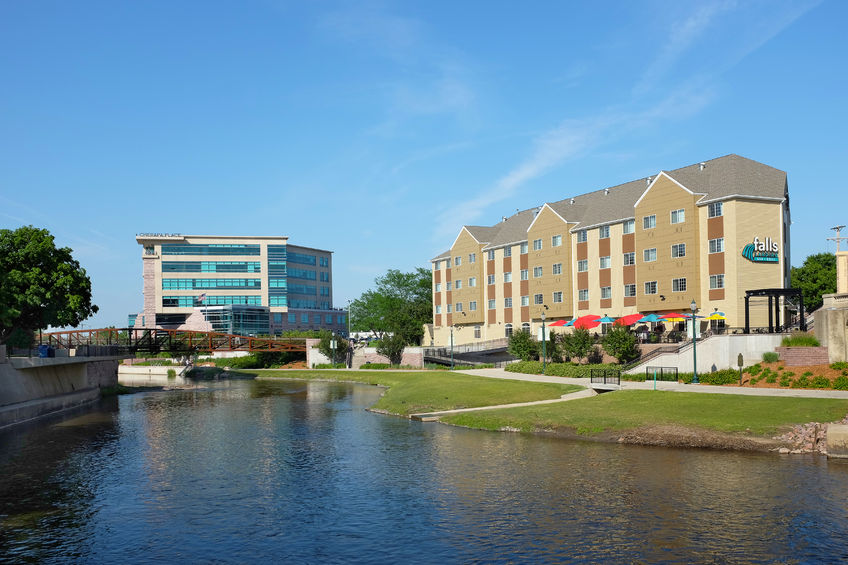
In addition to ECG’s unusual geography, the way it obtains the bulk of its business is also uncommon. Mages said that 50% of its business comes from other lenders who either turn down the applications or don’t have enough capital to lend to merchants. Mages said they can “turn coal into diamond.” The company primary funds B- to C- paper deals and services a variety of industries with the bulk coming from transportation/trucking, construction and business services. ECG provides loan products, which compose about 80% of the business, as well as merchant cash advance, which makes up the remaining 20%.
Mages expressed a lot of enthusiasm for the company’s technology, which he said is very helpful because it can save a lot of time. For instance, he said their system auto-declines 25 to 30% of the applications they receive, which can be between 3,000 and 7,000 a month.
“We then want to get as competitive as we can [for the right applications,]” Mages said.
ECG ranked #802 on 2018’s Inc. 5000 list of fastest growing U.S. privates companies. Founded in 2013, ECG now employs 65 people. According to Mages, there are 23 underwriters and 11 internal salespeople, plus in-house legal and regulations team, a marketing team and a merchant support team. There is a tiny office of two people in Delaware.
Varo Money Likely to Become First All-Mobile US Bank
September 7, 2018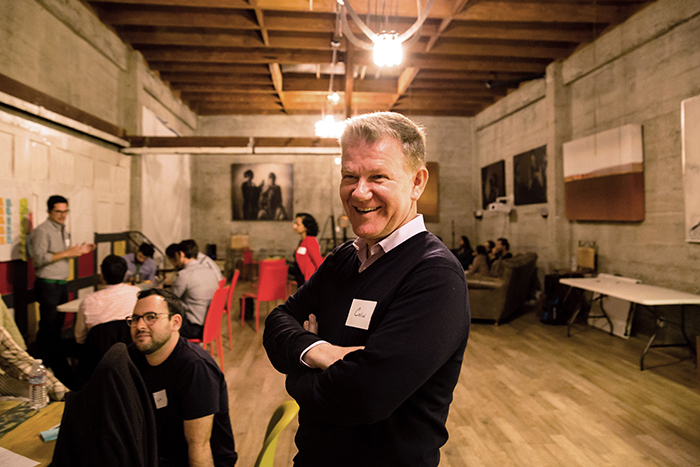 Varo Money announced on Tuesday that it was granted preliminary approval by the Office of the Comptroller of the Currency (OCC) for its application to form a de novo (new) national bank, paving the way for the company to become the first all-mobile bank in the U.S. Varo Money has no physical branches. All of its banking functions, including opening checking and savings accounts, and obtaining loans, are conducted on mobile devices.
Varo Money announced on Tuesday that it was granted preliminary approval by the Office of the Comptroller of the Currency (OCC) for its application to form a de novo (new) national bank, paving the way for the company to become the first all-mobile bank in the U.S. Varo Money has no physical branches. All of its banking functions, including opening checking and savings accounts, and obtaining loans, are conducted on mobile devices.
“This is an historic moment and marks the start of a new era in banking,” said Colin Walsh, co-founder and CEO of Varo Money. “We founded Varo because we saw that banks weren’t serving the majority of their customers very well, and we wanted to fix that. So we decided to build a bank from the ground up with the goal of improving consumers’ financial health through better technology and a more efficient business model.”
In July 2017, Varo Money applied to the OCC for a national bank charter and to the Federal Deposit Insurance Corporation (FDIC) for federal deposit insurance to form Varo Bank, N.A. Tuesday’s preliminary approval is the outcome of that application and is unrelated to the fact that the OCC recently started accepting applications from fintechs to become special purpose banks. That development was coincidental, Varo Money Director of Communications Emily Brauer Gill said.
Additionally, Varo Money did not apply to become an Industrial Loan Company (ILC) bank, like SoFi and Square (even though they subsequently withdrew their applications.) Companies that apply to become ILC banks are companies whose primary function is not banking. On the other hand, Gill said that Varo Money’s primary and singular function is banking.
“Colin [Walsh’s] goal was to be a bank and it looks like we’re on that path,” Gill said.
While Varo Money has no physical branches, clients have easy access to cash because of a partnership with Allpoint ATMs. There are more than 55,000 Allpoint ATMs worldwide, located inside retail stores like Target, Costco, Walgreens, and CVS, and Varo Money customers pay no ATM fees at these machines.
Walsh, who describes himself as a “reformed banker,” held executive roles at American Express and Lloyds Banking Group before co-founding San Francisco-based Varo Money in 2015 with company CTO Koyla Klymenko. In a company statement from last year, Walsh said they wanted to create a more affordable way for people to manage their money and reach their financial goals “with just a few taps on their mobile phone.”
CAN Capital to Grow Team and Business with New Facility
September 5, 2018 CAN Capital CEO Parris Sanz at Broker Fair May 2018
CAN Capital CEO Parris Sanz at Broker Fair May 2018CAN Capital announced today that it agreed to a financing transaction of up to $287 million, provided by Varadero Capital. This is CAN Capital’s second facility with Varadero Capital. The first one came in July 2017. This financing will be used to fund more small business loans and to invest in talent and technology to enhance customer experience. The company plans to grow the size of its team with this new facility.
“We look forward to utilizing this funding to expand our ability to provide access to capital for small businesses, enhance our technology stack, and continue to build a dedicated, customer-driven team,” said Parris Sanz, CEO of CAN Capital.
CAN Capital also announced today that it has now provided small businesses with access to over $7 billion of working capital through more than 190,000 funding transactions with over 81,000 small business owners.
“Reaching $7 billion in working capital is a significant milestone for us,” Sanz said. “We are excited to use our deep experience and data to enable even more small business owners to grow with streamlined access to capital.”
CAN Capital makes business loans from $2,500 to $250,000 that last between 6 and 18 months. And they provide merchant cash advance financing, also from $2,500 to $250,000. They also work with broker partners to fund deals.
Founded in 1998, CAN Capital is among the oldest alternative lending companies. After an issue plagued them in 2016, the continued growth and confidence in the company from Varadero Capital is noteworthy. The company is now growing when it was making layoffs less than two years ago. Currently, CAN Capital’s headcount is 142.
“Since our initial facility, we’ve been impressed by the work ethic and dedication of CAN Capital’s staff, which have driven consecutive quarters of business growth and boosted confidence in the company’s fundamentals,” said Fernando Guerrero, Managing Partner and Chief Investment Officer at Varadero Capital.
The Broker: How Copelon Kirklin Became a Dealmaker
September 3, 2018 Title: President of KPC Group, one man broker shop.
Title: President of KPC Group, one man broker shop.
Location: Kenner, Louisiana. Fifteen minutes outside of New Orleans.
What’s your morning routine?
I wake up at 6. I get a quick breakfast. I check my emails and then on to phone calls.
What keeps you going throughout the day?
My gasoline is my family. They’re my coffee, my 5-hour energy. They’re my motivation because I know what I want to give them. I’ve been able to accomplish some things in this business and [be able to] provide some of things for them… So no coffee here. Just the family. That’s my fuel.
Biggest deal?
$2.5 million deal. It was an SBA loan and I had 1 point in it. So I made a $25,000 commission.
What are a few of your biggest challenges as a broker?
If I’m dealing directly with a merchant, at the beginning, the way they represent themselves on paper regarding their revenue – everything looks good. And then when the actual bank statements come through, it doesn’t match up. I mostly work with construction contractors. It’s a niche and it’s pretty simple. But it’s only simple if [merchants] don’t misrepresent their financials, if they’re telling the true story.
Also, I don’t mind working with brokers…it doesn’t matter if you’re in the deal 50-50 or you’re just passing me a deal of a friend…I pay 50% every time, because I want to foster more relationships and get more deals that way. The challenge is when the co-broker can’t let go of the client to let me deal with them. It’s when they want to be the go-between. When they want to communicate through me to the client and it just doesn’t work that way. I haven’t closed any deals when another broker tries to work that way.
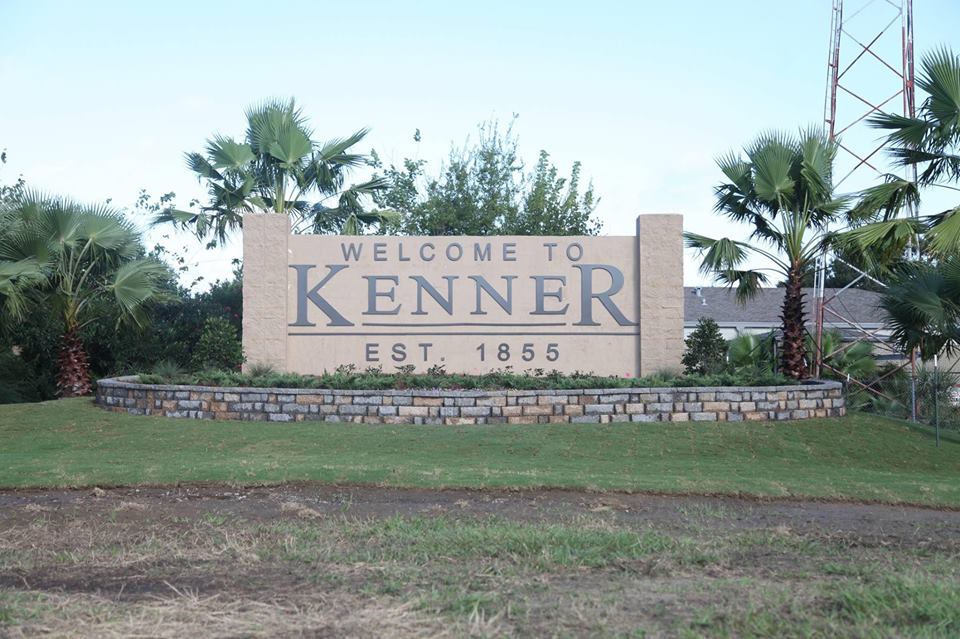 Could you tell me about your first deal?
Could you tell me about your first deal?
2014 was the first time I closed a deal in finance…and I only made $500. But I tell you, it was the best thing that happened to me because it let me know that it was possible. There was this one moment when I was really questioning “am I supposed to be doing this?” And I’ll never forget that day. I was sitting in my bed and I just had this look on my face and my wife asked me what was wrong and I told her “I don’t know if this is for me because I’ve been doing this for [a few] years and nothing’s happened yet.”
And to my surprise, she said “pick up that laptop, open it back up and you get back to work. It’s going to work out. You’re not doing this in vain.” And lo and behold, two weeks later, I closed that first deal at $500 [in commission], and the next week I closed two deals, one for $1,100 and one for $1,400. And I was just on my way from that point.
How did you learn to be a broker?
I learned from the internet. I found leads organically because I didn’t have any money for leads. LinkedIn was my best friend at the time and it’s still my go-to. It was where I learned that people are willing to do business with you without meeting you. I got hooked on it – developing my profile, adding to it, learning, making mistakes, chasing pipe dreams. [Those many months] before closing my first deal were just a lot of growing pains.
How do know when something isn’t real on LinkedIn?
It’s really about learning to do due diligence and not taking people at their word, even though you would love to. You check out their background. Do they just have a personal email address? That’s not always a killer, but it does help if they have a corporate email address if they’re telling you that they’re a lender. Learning that someone is actually a broker when they’re saying that they’re a lender. Checking Ripoff Report, seeing if [someone] has a website, learning to tighten my filter. In the beginning, you want it to be easy. You want to take people at their word. And I fell for [tricks]. But you have to do your homework.






























